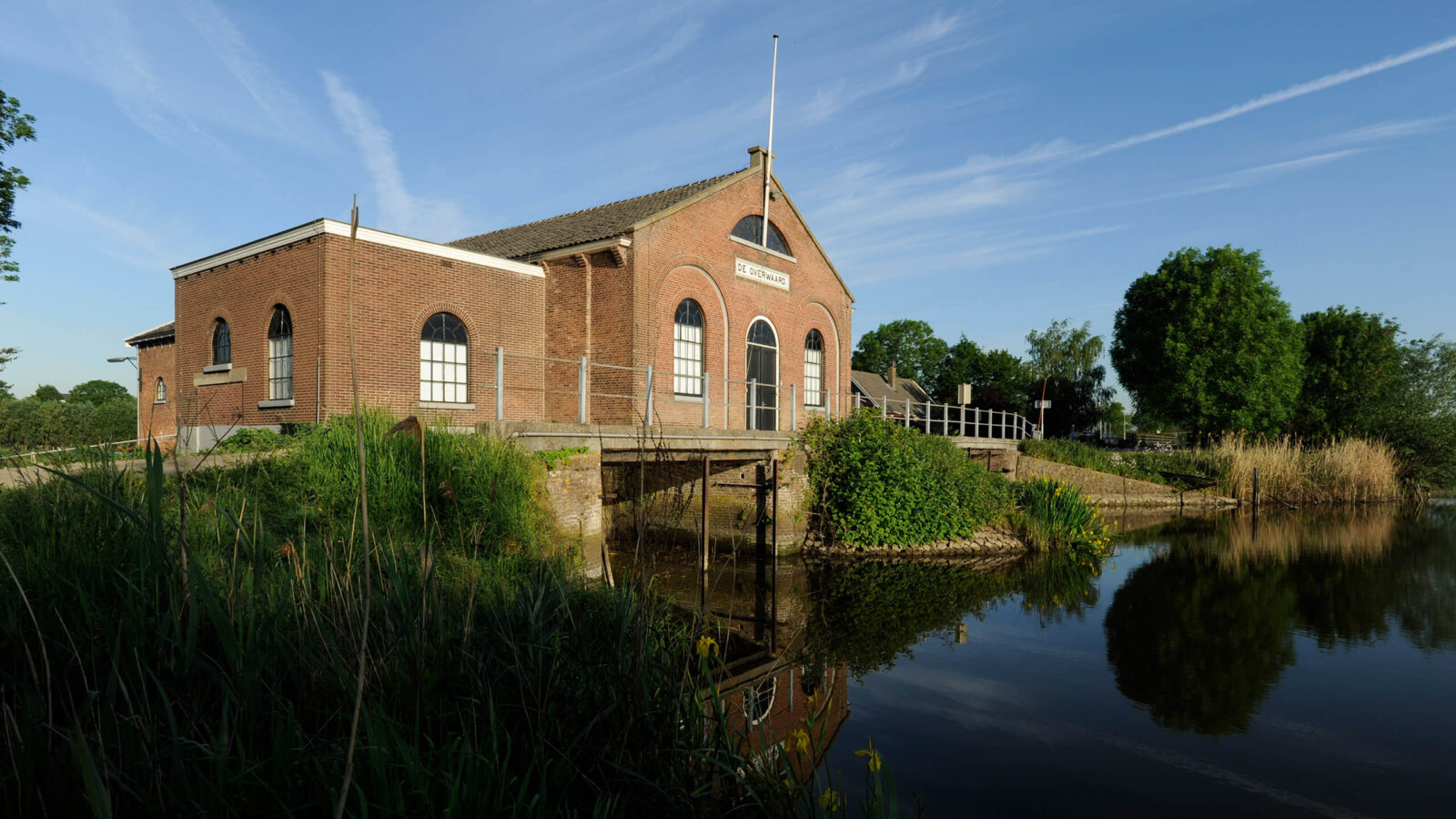
To mark its new purpose, it was named after the then chairman of the Overwaard polder governance board, Mr. C.B. Wisboom.
Building from 1868
The Wisboom pumping station is just one of the many stunning buildings that decorate Kinderdijk’s UNESCO World Heritage grounds. Here, you will delve deeper into the history behind Kinderdijk as you discover the workings of this pumping station, built in 1868.
Standing silently beside the glistening waters of the Kinderdijk basins, a monumental structure serves as the pivotal link between the historical windmills of ages past, and the twin modern pumping stations facing them along the river dike. This is the stately Wisboom pumping station, where once, the unique Kinderdijk approach to water management started to pick up steam to face the future. Its beating heart was originally made up of a wheezing, thumping steam engine. Later on, as technological insights advanced, this steam-powered heart was replaced by a whirring electrical engine.
Here, the latest in modern technology was employed to deliver the brute mechanical force necessary to pump the water out into the river beyond at ever-increasing capacity. That’s quite a long way to come for a system originally intended to run on wind power alone. Still, modernisation continued, and the latest insights eventually made even the sturdy machines of the Wisboom pumping station obsolete and outdated. Once the new duo of modern pumping stations had taken over, the Wisboom site got a new destination.

To mark its new purpose, it was named after the then chairman of the Overwaard polder governance board, Mr. C.B. Wisboom.
Inside you will learn all about the story behind the Kinderdijk windmills. Walk through history at your own pace by spinning a time wheel and listening to stories from times long past. Peer into the viewing boxes and imagine what these polders looked like centuries ago. Are you adventurous? Then our windmill game is really something for you! In the middle of the Wisboom pumping station is a real polder table, on which you can see the Alblasserwaard from above. It contains windmills that you can operate all by yourself, so get to grips with the controls and work with the forces of wind and weather yourself. Can you keep the soil wet enough without flooding it? Maybe a career as a miller is something for you…
The pungent scent of fresh engine grease draws you into the confines of the engine room, the former beating heart of this Overwaard pumping station. Our host can tell you all about the way this place used to look and feel when the machines were pounding away in full swing. At a 200-horsepower capacity, the old steam engine single-handedly managed to pump as much water out to the river as all eight Overwaard windmills combined: a staggering 425,000 litres per minute at full power. In 1924, Kinderdijk switched to electrically-powered pumps instead, doubling overall capacity to a whopping 870,000 litres per minute. The Wisboom pumps kept these lands dry until as recently as 1995, when the G.N. Kok pumping station – the angular building near the dike – took over the job.
The highlight in the Engine Room is undoubtedly the model, created by three volunteers. This stunning model provides a detailed representation of the Wisboom Pumping Station. Over 3.5 years, they worked with tremendous precision to reproduce every gear, mechanism, and corner of the old steam pumping station. A tribute to our history and heritage.
The three men on the bench are a special reference to the three creators of the model, who, with their dedication and craftsmanship, brought this masterpiece to life.
The old forge of the pumping station has been meticulously restored with pride, reviving the centuries-old craft of blacksmithing within the station. This means that small components for the mills are now crafted in a traditional manner right here in the World Heritage site. Explore the restored forge during your visit to this unique location!
Find a treasure trove of details